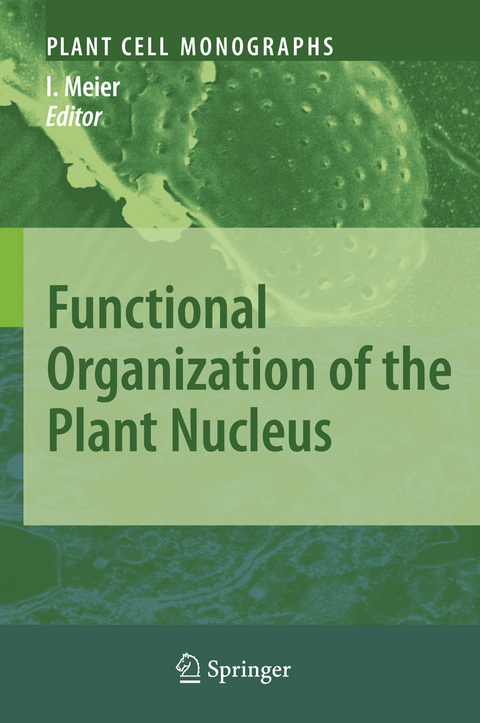
Functional Organization of the Plant Nucleus
Springer Berlin (Verlag)
978-3-642-09010-3 (ISBN)
In a presentation to the Linnean Society of London in November 1831, the Scottish botanist Robert Brown (perhaps better known for his discovery of Brownian motion) mentioned almost as an afterthought that in orchid epidermal cells, a single "circular areola" could be seen, a "nucleus of the cell as perhaps it might be termed." Thus, the term "nucleus" (from Latin nucleus or nuculeus, "little nut" or kernel) was born for the compartment of the eukaryotic cell that contains the maj- ity of genetic information. One hundred and seventy-seven years later, we know that the nucleus is the site where genetic information is stored in the form of DNA, and where it is protected from damage, duplicated, divided, recombined, repaired, and "expressed." For the latter, the genetic information is faithfully transcribed from DNA to RNA, then released from the nucleus into the surrounding cytoplasm. Most likely translated into polypeptide chains, the information re-enters the nucleus in the form of diverse proteins that function in the processes listed above.
Iris Meier is a professor in plant cellular and molecular biology at the Ohio State University, USA. She obtained her B.S. / M.S. degree in biology from the Technical University of Darmstadt, Germany, and her Ph.D. in molecular biology from the University of Dusseldorf, Germany. After a postdoctoral training at the Max Planck Institute for Plant Breeding in Cologne, Germany, and the University of California in Berkeley, USA, she has been a principal investigator at the University of Hamburg, Germany, the Dupont Experimental Station, Wilmington, DE, and since 1999 at the Ohio State University. Since 2006, she has been an associate editor for plant molecular biology. Her primary research interests are in the three areas of Ran signal transduction, nuclear pore and nuclear envelope protein function, and the structure and function of long coiled coil proteins in plants.
Functional Organization of the Plant Nucleus.- The Plant Nuclear Envelope.- Nuclear Pores in Plant Cells: Structure, Composition, and Functions.- Nuclear Export of Proteins and RNA.- The Nucleoskeleton.- The Role of Nuclear Matrix Attachment Regions in Plants.- Chromatin Domains and Function.- Integration of Agrobacterium T-DNA in Plant Cells.
From the reviews:
"This book, part of the excellent 'Plant Cell Monographs' series, provides a timely, thorough review of nuclear processes. ... chapter contributors deftly draw comparisons to animal systems, making this a valuable resource for all researchers in the life sciences. ... The black-and-white illustrations are ... sufficient to illustrate key points. This work will be valuable for advanced undergraduates and essential for graduate students and above. Summing Up: Highly recommended. Upper-division undergraduates, graduate students, researchers, and faculty." (T. P. Owen Jr., Choice, Vol. 46 (11), 2009)
| Erscheint lt. Verlag | 23.11.2010 |
|---|---|
| Reihe/Serie | Plant Cell Monographs |
| Zusatzinfo | XII, 192 p. 18 illus., 2 illus. in color. |
| Verlagsort | Berlin |
| Sprache | englisch |
| Maße | 155 x 235 mm |
| Gewicht | 316 g |
| Themenwelt | Naturwissenschaften ► Biologie ► Botanik |
| Schlagworte | cell nucleus • Chromatin • Kernhülle • Kernmatrix • Kernpore • Nuclear envelope • nuclear pore • nuclear skeleton • plant nucleus • Protein • RNA • Zellkern Pflanze |
| ISBN-10 | 3-642-09010-9 / 3642090109 |
| ISBN-13 | 978-3-642-09010-3 / 9783642090103 |
| Zustand | Neuware |
| Haben Sie eine Frage zum Produkt? |
aus dem Bereich


